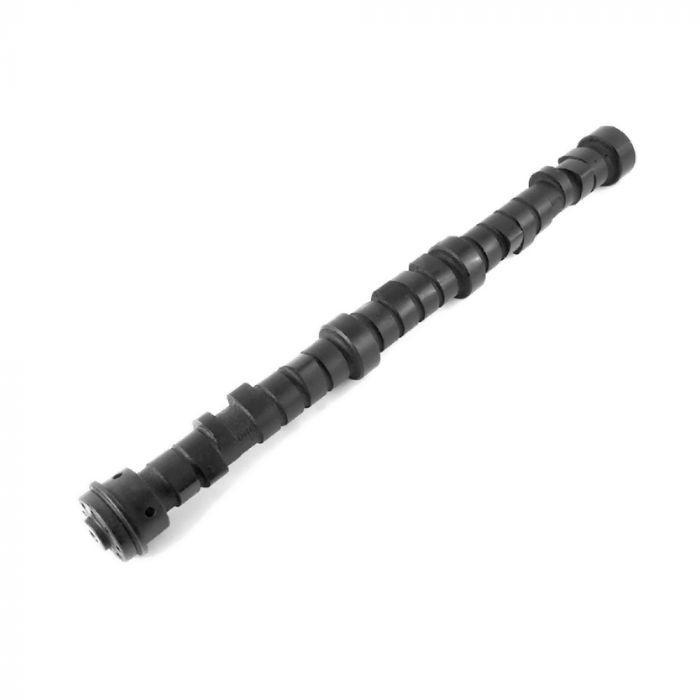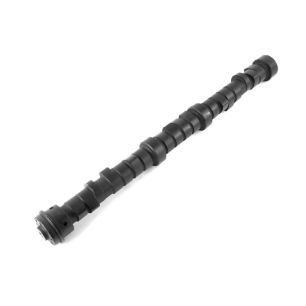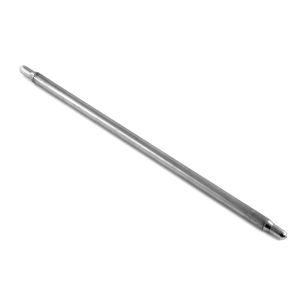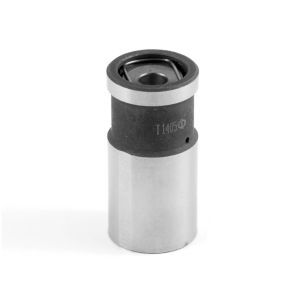Rolls-Royce & Bentley V8 Camshaft Mechanics: A Technical Dive
Matt sheds light on the technicalities surrounding the V8 camshafts, particularly UE36782 & UE44436, for Rolls-Royce & Bentley cars post-1960.
Camshaft Variations and Their Evolution
Rolls-Royce and Bentley V8 engines utilize camshafts UE36782 & UE44436, especially from their introduction in the early 1960s with the Bentley S2. A used camshaft often displays polished wear, while a new unit has a distinct blackened appearance.
The key differentiator between these camshafts is an additional lobe — located both at the front and the rear — which operates the brake pumps. This modification was integrated following the launch of the Rolls-Royce Silver Shadow. The hydraulic pumps, essential for the braking and suspension system, were in use up to the Arnage series.
These camshafts' mechanics remain consistent across different V8 engine models of both brands. The camshaft drives a follower, which then pushes the push rod (namely, UT14120PA & RH14157) into the cylinder head. This action prompts the rocker shaft and arm to press open the valve in the combustion chamber.
Timing and Synchronization in Engine Mechanics
The camshaft and crankshaft's synchronization is crucial. Their alignment guarantees the inlet and exhaust valves operate in sync with the pistons' movements. While modern smaller engines might use toothed belts, Rolls-Royce employs a gear-driven method.
Owing to the four-stroke engine design, the camshaft rotates at half the speed of the crankshaft. This is achieved by having the camshaft gear double the size of the crankshaft gear. The gears are meticulously designed to fit in a single orientation, ensuring accurate alignment and timing.
Issues and Maintenance Insights
Camshaft wear can present as a noisy top-end, typically indicating tappet problems. A worn-out camshaft lobe can impede the tappet's rotation, resulting in accelerated wear on both components. Models like the Arnage T and twin turbo Arnages sometimes face these tappet issues.
In hydraulic self-levelling tappets, such as UV11163PA, the top's height is determined by oil. They should be installed "dry", allowing them to self-prime to the correct height.
For those troubleshooting engine problems, Matt stresses the interconnected nature of camshafts and tappets. If considering tappet replacement, it's advisable to also contemplate a camshaft change.
Conclusion
Understanding the mechanics of Rolls-Royce and Bentley V8 camshafts highlights the intricate engineering behind these vehicles. For a deeper dive, please watch the detailed video where Matt provides more info!
Parts & Availability
| Part Number | Description | Application | Price | Availability | Link |
| UE36782 | V8 Camshaft | Rolls-Royce Silver Cloud II, III, Silver Shadow I, Silver Shadow II (A series only) Bentley S2-3 & T2 (A series only) |
£1,000.00 | Available | Buy Now |
| UE44436 | Camshaft | Rolls-Royce Silver Shadow II, Silver Wraith II, Corniche (1980-1986), Silver Spirit, Silver Spur, and Camargue. Bentley T2, Continental, Mulsanne, Mulsanne Turbo, Turbo R, and Eight. | £950.00 | Available | Buy Now |
| UT14120PA | Engine Push Rod | Models from 1965 to 1980 | £62.99 | Available | Buy Now |
| RH14157 | Engine Push Rod | Rolls-Royce Silver Cloud II & III; Bentley S2 & S3 | £124.99 | Available | Buy Now |
| RH14157-0.050 | Engine Push Rod (0.050" shorter) | Rolls-Royce Silver Cloud II & III; Bentley S2 & S3 | £54.80 | Available | Buy Now |
| UV11163PA | Hydraulic Tappet | Rolls-Royce & Bentley V8 engines from 1959 to 2002 | £66.50 | Available | Buy Now |
Silver Cloud II/III & S2/3 Camshaft & Valves : Exploded Diagram


Full Video Transcript
Today we look at Rolls-Royce and Bentley camshafts (UE36782 & UE44436). These two camshafts are from V8 engines, so they are very similar and have been used on most of the Bentley V8s from when they were introduced in 1960, or early 1960's on the Bentley S2.
This used camshaft has been returned to us as a core unit to be reconditioned and also we have a new one here. The difference between the two is that the unused one still has the blackening on it but after a bit of wear that will come off and it will beome polished like this old one.
The difference between these two camshafts is an extra lobe: one at the front and one at the back. That is to run the brake pumps. So after the Rolls-Royce Silver Shadow was introduced the hydraulic pumps were used for the braking and suspension system all the way up to the Arnage series. This camshaft has not got the same pumps because the Silver Cloud uses servo assisted brakes and not hydraulic.
The camshafts stay almost the same throughout the Rolls-Royce and Bentley V8 engine models. It is not an overhead camshaft so it drives a follower. The camshaft is driven through the centre of the engine and it drives a follower which pushes the push rod (UT14120PA & RH14157) up into the cylinder head, which pushes on the rocker shaft and rocker arm which in turn pushes the valve open inside the combustion chamber.
A slight differences that happen are with the brake pump lobes on the Bentley S Type models. At the late Silver Shadow II on the B series engine they change the back flange. The front of the camshaft is where the timing gear is bolted on. The camshaft opens and closes the valves in time with the pistons coming up and down so that you have the right flow of gases coming in, then as the piston comes down the inlet valve opens. That draws in the air of fuel mixture, then the inlet valve closes, the piston comes up to the top and compresses the mixture, spark plug goes off, power stroke forces the piston down and as the piston gets to the bottom, then the exhaust valve starts to open, so as the piston comes back up to the top, it drives the exhaust gases out through the exhaust. That means that it has to be in perfect time because it's all happening very quickly so there are a number of different ways that companies will use to time the camshaft to the crankshaft.
Sometimes there is a toothed belt, most modern small engines will have a toothed belt which is catastrophic if it fails because the pistons will carry on moving and the valves stay where they are which results in pistons smashing into valves. That can happen on any set up but a rubber belt is probably the easiest thing to break. The other common method is a chain which is stronger than a belt, so is less lightly for failure, but what Rolls-Royce use is a gear. Because this is a four stroke engine the piston has to move up and down four times or stroke four times for one cycle. So the valves only open once for every two strokes of the pistons, and each valve opens once for each two stroke of the piston. The camshaft has to be slowed down to half the speed of the crankshaft so the gear on the camshaft is twice the size of the gear on the crank. Holes in the end of the camshaft where the gear bolts onto are actually offset, so you can only fit the camshaft gear on in one position.
There is also the same situation with the crankshaft gear. The crankshaft gear can only go on in one position. It is on a woodruff key and then there is a mark on the camshaft gear and a mark on the crankshaft gear that lines up. Effectively what that means is that it can only go on one way. That means that the valves will be opening up at the right time for the pistons so that is critical. If you ever have to do that, then when you do fit the gears, always turn the engine over by hand, just to make sure there is no interference between the valves and the pistons.
The next thing to talk about are the problems you might get with camshafts. If you have a noisy top end, you might find that your tappets are noisy. A lot of the time if there are worn lobes on a camshaft it can cause problems. Having the lobe worn flat will cause the tappet to not turn as it's pressed up, So, when these are made, or re-manufactured, there is actually a taper cut and the lobe is at an angle and that lifts the tappet it actually turns it. That means that you have not got one constant place of wear as you are constantly turning the tappet.
When the lobes wear they can wear flat and that causes the tappets to not turn when it's running and that can wear down the tappet and the camshaft even more. The Arnage T and the twin turbo Arnages suffer with tappet failure and it's often one of the back lobes. It will work fine until the tappet fails completely and then there is a knock. If you dismantle the engine, and take the tappet cover off, you will find that actually the tappet is worn down a quarter of an inch and the lobe is worn down and rough because it's just eaten through the bottom of the tappet. Now it will still work just fine until it goes so far through the tappet that it hits the inside and the oil leaks out.
These tappets are hydraulic self-levelling tappets, so this valve, this top inside here, the height of it is determined by the car so you put these in dry and when these are dry you can actually push this against it's own spring pressure and it will be loose. When you first fire the car up you will get a kind of rattle as the oil is forced into these tappets and it finds it's height. If you prime these first before you install them in the engine, it will be too high and actually you could risk bending a push rod because It's over primed and it is too high. So you always have to fit a tappet dry and let it self-prime.
Also, if you have done several head gaskets on the car, if the head gasket has failed a couple of times and the head has been skimmed and quite a lot material has been taken off the head then that lowers the head and it lowers the position of the rocker shaft which means that effectively your tolerances on the tappet are going further down. The tappets have an area within which they can operate and if you over skim the head you can actually move it down so far that it becomes out of tolerance, then your tappets won't prime properly and you may not be able to get it to run quietly. Effectively, you could run a shorter push rod but I don't think they make a shorter push rod than standard.
On the Bentley S Types there are different lengths of push rod which can be used to overcome this problem but that is one of the issues if you over skim cylinder heads. Because of the problem with the lobes wearing, we always suggest that if you change a set of tappets, you change the camshaft as well. If you get noisy tappets and you put in a set of tappets and then you find the tappets are not turning, then they are just going to wear out very quickly so it is always recommended to change the camshaft with the tappets.
Always make sure that you have good oil flow up to the camshaft. One of the problems with camshafts is that you need quite a lot of access to get them out. It comes out from the front and you haven't got enough room in the engine bay for that so it's an engine 'out' job to work with the camshaft.
The back of the camshaft drives the distributor gear and again that has to be timed because your ignition timing is just as important. That's all on campshafts for now but if anyone has any other questions, please feel free to ask and refer to the attached video for more detail and to see the camshafts!
Click here for the interactive parts catalogue relating to the Rolls-Royce S2 Camshaft and Valves.





